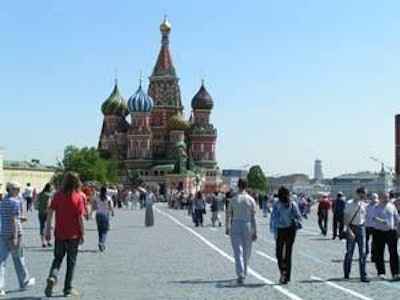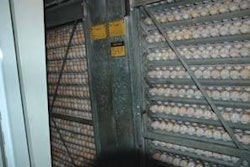
While the Russian consumer’s taste for poultry meat continues to grow, local suppliers have been unable to keep pace. Russia sources a significant proportion of its poultry meat from overseas, but concerned by the balance of payments, and with a devalued currency, dependence on imports is far from ideal for the Russian government.
Faced with these difficulties, Russia has adopted various measures to stimulate home production. These measures, however, have had various repercussions for the Russian consumer.
Rising prices
Food price inflation, and particularly the price of meat and poultry, is expected to carry on upwards this year. Last year, retail prices of meat and chicken rose by 23 percent, while those for food generally were up by 18%, according to data from the Russian State Statistical Service (Roostat).
These price increases are seeing consumers not only switch to cheaper cuts of meat, but are also driving them to buy cheaper meats, notably chicken.
However, this increased demand for chicken due to the price inflation of other meats, is, in itself, pushing up prices. Wholesale prices for domestic frozen poultry carcasses and chicken leg quarters in Moscow in December last year were 24% higher in comparison with December 2007. Prices for imported chicken carcasses were 14% higher, while the price of imported chicken leg quarters rose by 31%, reports the USDA Foreign Agricultural Service.
There has traditionally been a price differential between wholesale domestic and imported chicken leg quarters. For the first six months of 2008, this hovered around 10 roubles per kilo, however, by the second half of the year this had fallen to 3-6 roubles and supplies tightened.
Retail prices for chicken have also increased significantly in Moscow. Nevertheless, wealthier consumers are still able to purchase more expensive products and brands, while those on lower incomes can still purchase cheaper products.
There is no doubt that poultry meat is a popular meat in Russia. According to the Russian delegation at this year’s International Poultry Council Spring meeting, in 1990, poultry accounted for only 19% percent of the meat consumed by Russians. By 2008, this figure had risen to 36 percent, with beef being the main loser.
So with poultry being such a popular meat in Russia, and production being so plentiful in many parts of the world, what exactly lies behind the current failure of supplies on the Russian market to meet demand?
Complex market
Imported poultry meat currently accounts for some 36 percent of Russian consumption. Although this figure has been declining, it remains uncomfortably high for the government, which wants to move the country to self-sufficiency.
The Ministry of Agriculture has repeatedly blamed imports for driving down farmgate meat prices and, in an attempt to stimulate home production, Russia has been restricting imports, not only of poultry meat but also of other agricultural goods. Poultry imports have been subject to quotas and some US and European processing plants have been delisted for failing to meet Russian standards.
In 2008, the Russian poultry meat quota stood at 1.25 million metric tons. Under the new quota, imports from the USA have been cut by 180,000 tons, while those from the EU have been reduced by 60,000.
However, this approach is not simply due to economic nationalism. Russia has not been immune to the financial downturn, and the devaluation of the rouble has made imports more expensive.
After a decade of rising living standards, the country is now heading into recession. With the rate of unemployment at an eight-year-high, there are concerns about social order in the country. Encouraging poultry production and becoming self-sufficient in meat production would not only help the balance of payments, but also create employment, preserve social order, and help to avoid to the crises faced by food importers when prices rise.
Intervention
The Agriculture Ministry has said that state banks will provide loans of 72 billion roubles US$2.3 billion) this year for the construction of new animal and poultry farms and slaughterhouses, and another 74 billion roubles to complete projects that are already underway.
Many pork and poultry producers in the country have already been the beneficiaries of subsidized loans, and the government has in interest in ensuring that these businesses survive so that loans are repaid.
Local production is also being stimulated through such actions as measures as the regulation of feed prices.
Forecasts vary, but there are predictions that Russia could be self-sufficient in poultry meat by 2012. Other predictions suggest that the percentage of foreign poultry meat consumed in the country will fall to 10 percent of the total.
Individual Russian produces may benefit from state loans, favourable input prices and an overall drive towards self sufficiency. What will remain key, however, for the success of the Russian producers and their share of the local market will be production of a quality product at a price that consumers can afford. Even with restricted quotas, if Russian producers are unable to achieve this, there will always be demand for imported poultry.

















